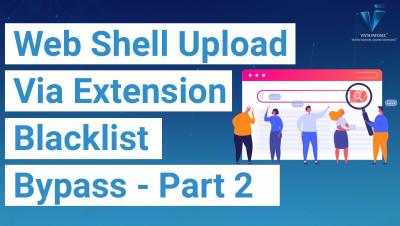Web Shell Upload Via Extension Blacklist Bypass - Part 2
Web shell attacks are a critical and growing threat, often evading traditional defenses. In this Part 2 of our exploration into web shell attacks, we uncover how attackers leverage extension blacklist bypasses to upload malicious web shells and compromise systems. Stay informed! Like, comment, and subscribe for more expert insights into cyber threats and effective defense strategies. For Collaboration and Business enquiries, please use the contact information below.











